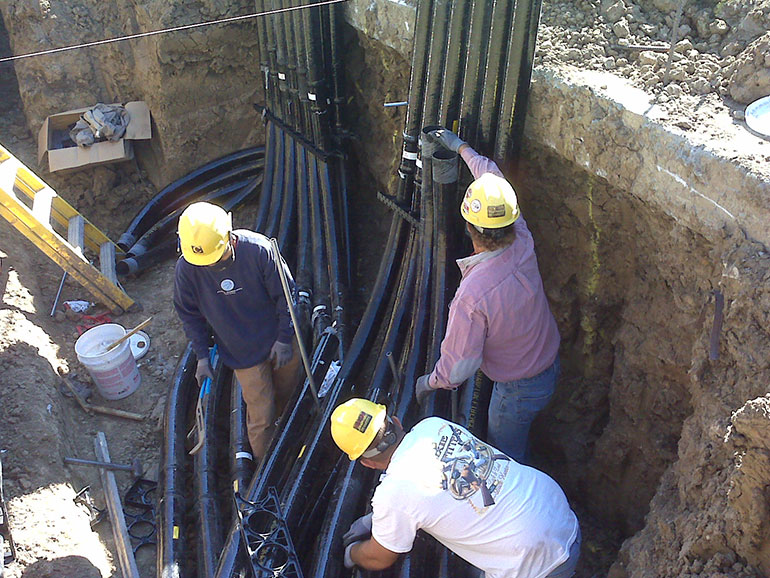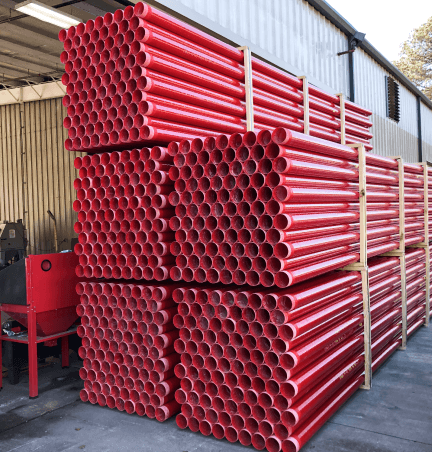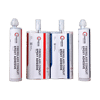This article provides a comprehensive overview of the most common types of underground electrical conduit, NEC requirements, and installation considerations for below-ground electrical projects.
Choosing the Best Underground Conduit for Projects
Electrical conduit provides valuable protection to electrical wiring and electrical cable from moisture, fire, corrosion, impact, electrocution, and short-circuits. With many options available to project managers and engineers, it’s important to consider the location and environment specific to each project when selecting an electrical conduit to specify or source.
Choosing the wrong conduit can result in risks to safety and significant financial implications.
Potential Safety Risks
- Electrical Shock: Inadequate conduit exposes electrical wiring to the risk of physical damage that could result in electrical shock to humans and animals.
- Short Circuits: For use underground, electrical conduit must offer sufficient protection against moisture and corrosion, or it runs the risk of short circuits and equipment failure.
- Injuries occurring during installation: Weight, ease of field handling, and the ability to safely field cut the conduit each contribute to the potential for injury to occur during installations.
Financial Implications
- Direct Repair Costs: A variety of factors can cause a conduit to fail, leading to costly repairs. Metal conduit types are particularly susceptible to corrosion, while PVC conduit may not provide an adequate temperature range or enough strength to withstand soil compaction.
- Installation & Maintenance Access: Selecting a conduit with a low coefficient of friction allows electrical wiring to be easily pulled through for a speedier, lower cost installation, without the risk of burn through. It also allows for easier cable repair and replacement after a cable fault, minimizing lifetime maintenance costs.
Requirements for Underground Conduit Installations
UL 2420 BG
This standard details the requirements for low-halogen below ground (Type BG) reinforced thermosetting resin conduit (RTRC) and fittings, for installation and use in accordance with CSA C22.1, Canadian Electrical Code (CE Code), Part I, and NFPA 70, National Electrical Code (NEC).
UL 2420 encompasses ID and IPS conduit and fittings for trade sizes 1/2 (16) to 6 (155), and both encased burial and direct burial conduit.
UL 94 HB
Underground electrical conduit must meet the below ground conduit requirements of UL 94 HB (horizontal burn). All conduit approved for above ground applications is also suitable for use in below ground (or underground) applications.
NEC Code for Underground Conduit
Article 355 of the National Electrical Code (NEC) details the scope of accepted use, installation, and construction for fiberglass conduit, also known as reinforced thermosetting resin conduit (RTRC), a rigid nonmetallic raceway of circular cross-section, with integral or associated couplings, connectors, and fittings for the installation of electrical conductors and cables. Underground installations are among the approved uses permitted for fiberglass conduit trade size 1/2 through trade size 6.
How Deep to Bury Electrical Conduit Underground?
Depth requirements for buried electrical cable and buried wiring (also known as direct burial installations) can be found in the NEC (National Electrical Code).
Comparing Underground Conduit Options: Fiberglass, Metal, and PVC
Traditional Metal Conduits
Traditionally, heavy metal conduits made of steel or aluminum were commonly used for a majority of electrical conduit construction projects. In recent years, the market has shifted away from traditional metal substrates as lighter, more cost-effective and durable conduits such as RTRC (fiberglass conduit) have become more widely used.
- Rigid Metal Conduit (RMC): RMC is composed of heavyweight galvanized steel, stainless steel, or aluminum, and installed with threaded fittings. RMC is very strong and unfortunately also very heavy, contributing to higher than average cost of both materials and labor.
- Electrical Metallic Tubing (EMT): Thin-walled and unthreaded, EMT is typically made of coated steel or aluminum and used in place of GRC in commercial and industrial applications. EMT is best for indoor applications and not typically recommended for outdoor or underground electrical applications because of its susceptibility to being damaged easily and need for special watertight fittings.
Fiberglass Conduit
In terms of raw material costs, fiberglass conduit is one of the more affordable electrical conduit options, and it is significantly lighter in weight than traditional conduit materials, resulting in more cost efficient labor installation rates. Its unthreaded joints make it easy to install and in many cases it does not require special equipment. Its low coefficient of friction eliminates the risk of burn-through for long cable pulls.
Fiberglass conduit is an often preferred substrate for utilities, commercial, and industrial applications requiring direct burial and encased burial below ground installations because it is resistant to temperature, moisture, and corrosion. Its mechanical strength provides impact and corrosion resistance that stand up to many types of soil conditions found in underground applications. Also to note, fiberglass conduit is non-toxic, making it an environmentally-friendly option, and chemically inert, which contributes to its longevity.

PVC Conduit
Well known for being one of the least expensive electrical conduit, PVC electrical conduit is relatively durable and offers protection from moisture and corrosion. PVC is limited in its temperature range (+40℉ to +150℉), and emits toxic fumes when melted. If an outdoor installation may experience extreme heat or cold, PVC might not be suited for a project.
Common Underground Conduit Problems
Corrosion
Soil acidity, moisture, and chemicals can react with metal conduit, causing corrosion to occur. Both fiberglass and PVC conduit offer greater resistance to corrosion than metal conduits.
Water Damage
Improper sealing can leave conduit at risk of future water damage. Fiberglass conduit is known to be highly resistant to water intrusion.
Root Intrusion
Poor sealing and small cracks caused by soil compaction can leave conduit vulnerable to root intrusion. Choosing a non-porous conduit and utilizing root barriers around trees can help mitigate future root damage.
Ground Shifting
Metal conduit may not provide enough flexibility to withstand ground shifting and settling, leaving it vulnerable to cracks.
| Conduit Type | Corrosion Resistance | Water Resistance | Root Resistance | Temperature Range | Ease of Installation |
|---|---|---|---|---|---|
| Fiberglass Conduit | Excellent | Excellent | Excellent | Excellent | Excellent |
| PVC Conduit | Good | Good | Poor | Moderate | Good |
| Metal Conduit | Poor | Poor | Poor | N/A | Poor |
Which Conduit Is Best for Your Below Ground Application?

Key factors to consider include:
- The protective qualities of the substrate
- Ease of installation (and the costs associated)
- Long term costs associated with durability and project lifespan
- Up-front materials and labor cost
It’s important to consider a variety of attributes that will affect the lifespan of an installation, not limited to the conduit’s level of corrosion resistance, temperature, range and impact resistance.
To compare material and installation costs of fiberglass (RTRC), PVC and a variety of traditional metal conduits including GRC, EMT, aluminum and stainless steel, visit the Champion Fiberglass Conduit Calculator.
For help selecting a conduit, reach out to an Electrical Sales Rep to learn more.
This post was originally published on May 16, 2022 and has been updated for comprehensiveness.
FAQs
Fiberglass (RTRC) electrical conduit is the best type of conduit to use for underground applications because it is resistant to temperature, moisture and corrosion and is non-toxic, making it an environmentally-friendly option.
In commercial settings, a minimum depth of 24 inches is generally recommended for nonmetallic conduit, while metal conduit may require 6 to 12 inches. For a comprehensive guide, see How Deep Does Electrical Conduit Need to Be Buried?
Industrial installations often require deeper burial due to higher load and traffic considerations. A minimum depth of 24 to 36 inches is common for both nonmetallic and metal conduits in these environments.
Yes, Article 355 of the National Electrical Code (NEC) details the scope of accepted use, installation, and construction for fiberglass conduit, also known as reinforced thermosetting resin conduit (RTRC), and includes underground installations among its permitted uses.
The National Electrical Code (NEC) provides specific guidelines for conduit burial depths in Table 300.5. Rigid metal conduits carrying circuits rated 1,000 volts or less must be buried at least 6 inches deep, unless they are buried under airport runways where they must be buried at least 18 inches deep, or under highways, roads or parking lots where they require a minimum of 24 inches of burial depth. However, these are just baseline requirements, and local codes or specific environmental factors may necessitate deeper burial.












